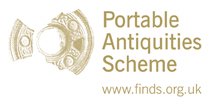Server check!
You are on the training database
Early medieval finds from the Portable Antiquities Scheme, and the search for meaning
Principal investigator: Liam
Level: Masters degree
‘Early medieval finds from the Portable Antiquities Scheme, and the search for meaning’ - Masters Degree in Field Archaeology, Dissertation Topic. 2010. Department of Archaeology, University of York.
The Portable antiquities scheme has greatly enhanced our ability to locate and interpret many previously unknown sites. With archaeological evidence, the finds rich or ‘Productive’ sites as they have become known can be examined in more detail. But are the distribution patterns actually historical concentrations of metal finds? or just the search patterns of detectorists? Do high concentrations of finds indicate ‘Productive sites’ and conversely does a lack of finds represent ancient wastelands such as marsh or woodlands? The information published by PAS – the portable antiquities scheme, has facilitated a lot of research, and in particular it has added greatly to the debate surrounding the extent, and nature of Scandinavian settlement, in area, that formed the northern and eastern parts of the Danelaw. The search for evidence of Danish settlement in Lincolnshire, and Norfolk has been undertaken with some success. The debate as to what constitutes a ‘Productive’ site has also been considerably added to. It is my intention to revisit the work done by Kevin Leahy in Lincolnshire and Sue Margeson in Norfolk, and conduct fresh work of my own in Northamptonshire.
This project will run over the summer with a deadline of 1st September. It would greatly help my work if i could know more exact locations of the findspots.
Audit data
- Created: 14 years ago
- Created by: D P
- Updated: 14 years ago
- Updated by: D P


